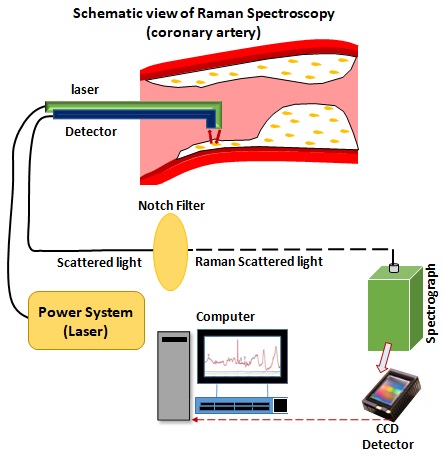Raman Spectroscopy
What's Raman Spectroscopy?
- Raman spectroscopy is an optical technique which uses the reflected light from the plaques to determine the chemical composition of the tissue.
- Different chemical compositions scatter different wavelengths (and energies) so each tissue, due to its chemical composition (lipid, collagen, calcium, etc.), has a unique pattern of light absorbance.
- Raman spectroscopy collects light scattered by tissue when illuminated with high energy laser.
- Most of this scattered light is at the same wavelength as the incident light, some are at different wavelengths.
- The amount of the wavelength shift which is called Raman shift depends on the characteristics of the molecule.

- Catheters based on advanced high-wavenumber Raman spectroscopy can identify and quantify lipids and lipid subcategories within human coronary arteries in-vivo. The technology promises to enable patient risk assessment and treatment of the cause of heart attacks before they occur.
- A Raman spectrum of cholesterol can be divided readily into the fingerprint and high wavenumber regions.
